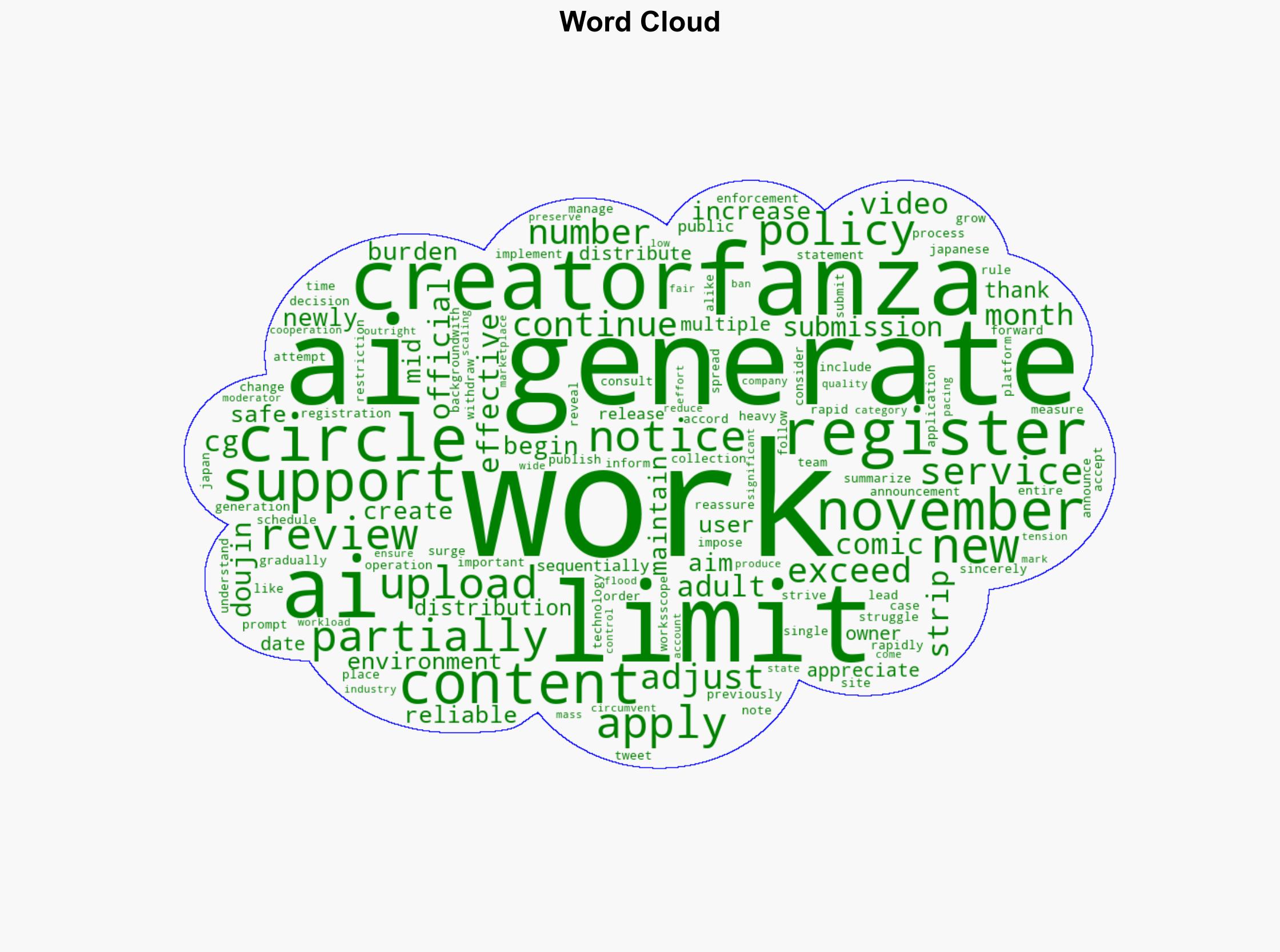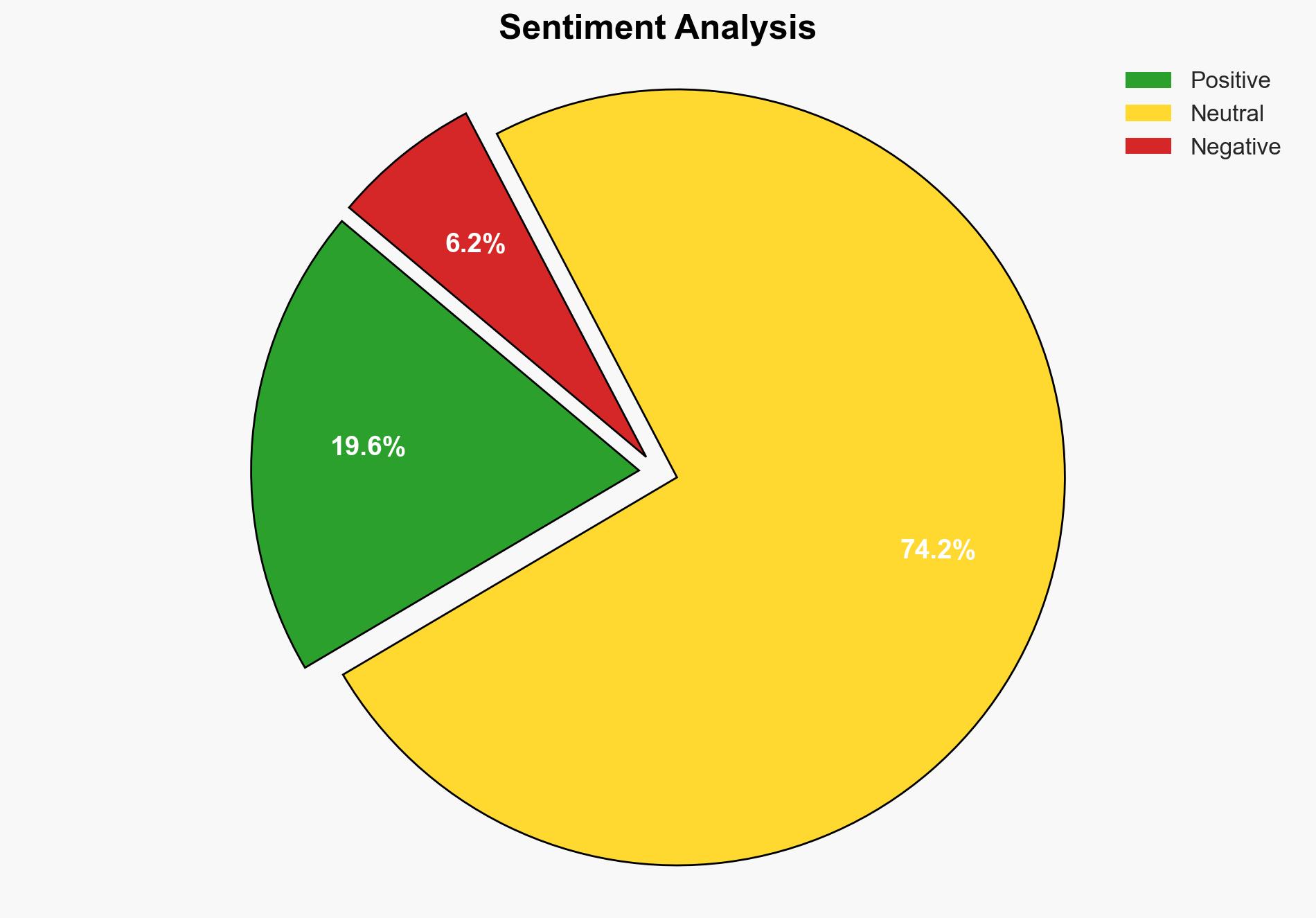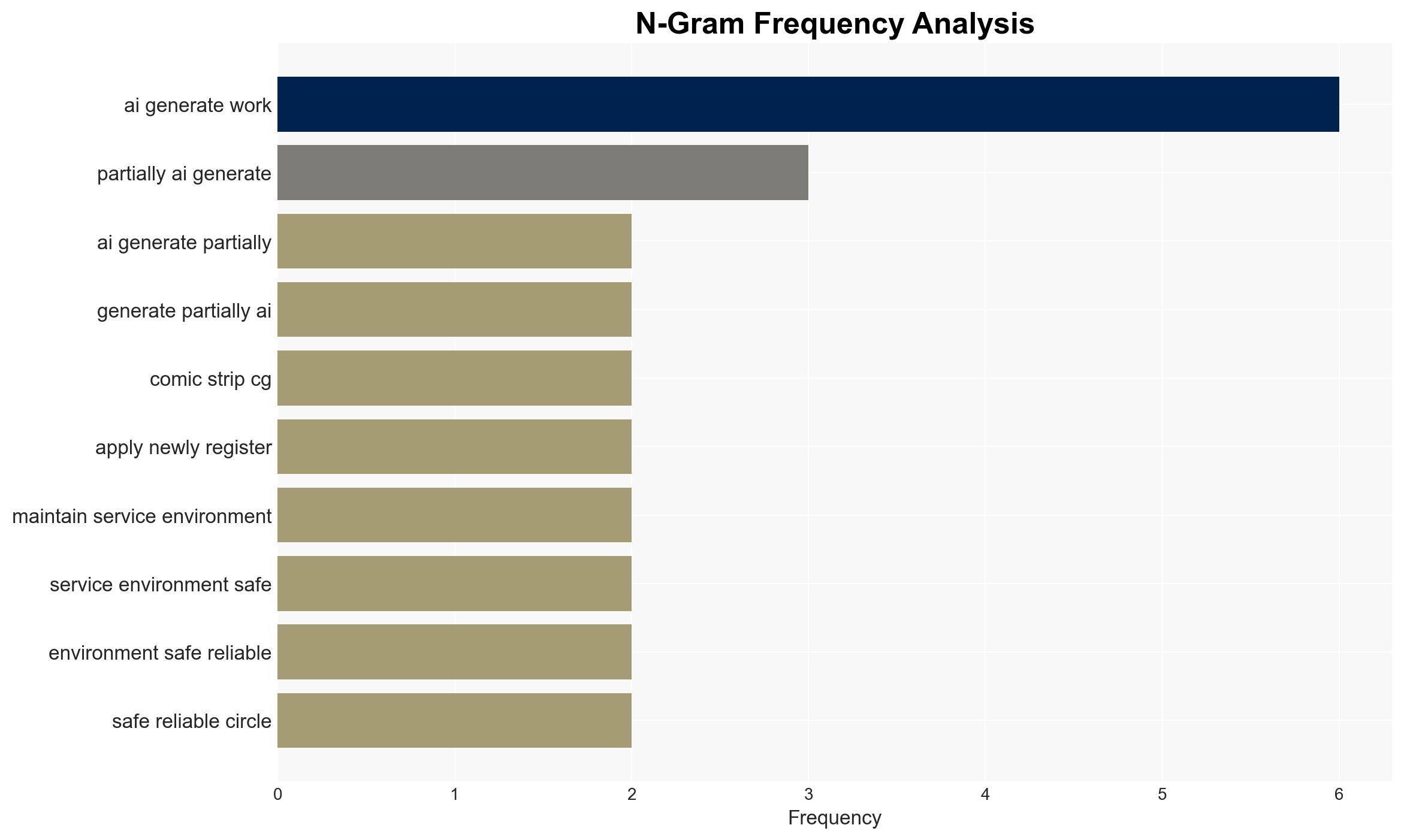FANZA Restricts AI-Generated Content to Three Uploads per Month – Sankakucomplex.com
Published on: 2025-11-13
AI-powered OSINT brief from verified open sources. Automated NLP signal extraction with human verification. See our Methodology and Why WorldWideWatchers.
Intelligence Report: FANZA Restricts AI-Generated Content to Three Uploads per Month – Sankakucomplex.com
1. BLUF (Bottom Line Up Front)
FANZA’s decision to limit AI-generated content uploads is a strategic move to manage quality control and operational burden. The most supported hypothesis is that this policy aims to maintain the platform’s reputation and user trust by ensuring content quality. Confidence level: Moderate. Recommended action: Monitor the policy’s impact on user engagement and content quality, and assess potential adjustments to AI content management strategies.
2. Competing Hypotheses
Hypothesis 1: FANZA’s restriction on AI-generated content is primarily to maintain content quality and platform reputation.
Hypothesis 2: The restriction is a strategic move to mitigate operational burdens and costs associated with reviewing a high volume of AI-generated submissions.
Assessment: Hypothesis 1 is more likely due to FANZA’s emphasis on maintaining a “safe and reliable” service environment, suggesting a focus on quality control. Hypothesis 2 is also plausible given the stated operational burdens, but less emphasized in official communications.
3. Key Assumptions and Red Flags
Assumptions: FANZA’s user base values content quality over quantity; AI-generated content is perceived as lower quality by users.
Red Flags: Lack of detailed metrics on how AI content affects user satisfaction; potential bias in assuming AI content is inherently lower quality.
Deception Indicators: None identified in the current communication.
4. Implications and Strategic Risks
The restriction could lead to a reduction in user-generated content, impacting user engagement and platform diversity. There is a risk of backlash from creators who rely on AI tools, potentially driving them to competitor platforms. Additionally, the policy may set a precedent for other platforms, influencing broader industry standards and practices.
5. Recommendations and Outlook
- Monitor user engagement metrics post-implementation to assess the policy’s impact on platform activity.
- Engage with creators to gather feedback and adjust the policy if necessary to balance quality control and creator freedom.
- Best-case scenario: The policy successfully improves content quality and user satisfaction, leading to increased platform loyalty.
- Worst-case scenario: Significant loss of creators and users to competitors, reducing market share.
- Most-likely scenario: Initial resistance from creators, followed by gradual adaptation and stabilization of content quality.
6. Key Individuals and Entities
No specific individuals mentioned. Key entity: FANZA’s Doujin Support Team.
7. Thematic Tags
Cybersecurity, Content Management, AI Regulation, Digital Media Strategy
Structured Analytic Techniques Applied
- Adversarial Threat Simulation: Model and simulate actions of cyber adversaries to anticipate vulnerabilities and improve resilience.
- Indicators Development: Detect and monitor behavioral or technical anomalies across systems for early threat detection.
- Bayesian Scenario Modeling: Quantify uncertainty and predict cyberattack pathways using probabilistic inference.
Explore more:
Cybersecurity Briefs ·
Daily Summary ·
Methodology





